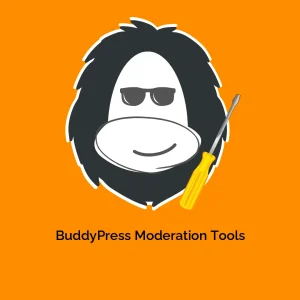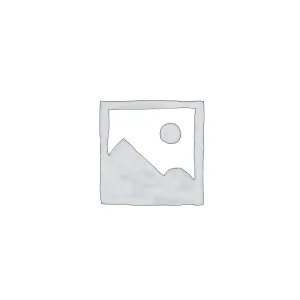The Rise and Fall of Google Plugin in WordPress
The Google Plugin, once a promising integration for WordPress users, witnessed its demise alongside the shuttering of Google+. This reflects the journey of a social media platform that, despite the backing of a tech giant, failed to gain traction among internet users. The merging of Google+ with the WordPress ecosystem offers a unique perspective on social media and content integration, emphasizing the vital role of user engagement and platform utility.
Understanding Google+ and Its Attempts at Social Media Integration
Launched with the intent to rival Facebook, Google+ aimed to create a streamlined social media experience. It offered a way for content creators to distribute their work within a niche that promised quality over chaos. With featured functionalities like Google+ Pages, it sought to centralize quality content, aligning publishers with readers effectively.
For WordPress, embracing Google+ meant harnessing the power of its APIs to enhance user engagement. Several plugins surfaced, the most notable being the Google Plugin and Hustle, designed to facilitate interaction through shared posts, user synchronization, and tracking features. Not only did these plugins promise to increase visibility through the use of +1 buttons—comparable to Facebook’s like buttons—but they also hinted at potential SEO benefits. According to popular belief, increased +1 clicks could possibly enhance site rankings on Google, giving WordPress users an added incentive to adopt this integration.
The Reality: Low User Engagement
Yet, as favorable as these features appeared, they weren’t enough to foster a loyal base of users. The early adopters of Google+ soon became disenchanted as lackluster engagement overshadowed initial optimism. The platform’s distinct features simply did not resonate enough with users in comparison to the already-established behemoths like Facebook.
Google’s ambitious venture faced further crises, culminating with a severe bug that exposed the private data of numerous users—a major breach that proved detrimental to its already wavering reputation. This, combined with the stiff competition and a struggle to maintain its APIs, rang a death knell for Google+. The closure on April 2, 2019, marked a significant turning point for all involved parties, including WordPress users who relied on Google Plugin integrations.
Shifting Dynamics: Alternatives to Google Plugin
With the extinction of the Google Plugin and Google+, WordPress users found themselves at a crossroads. How could they replicate the collaborative, curated approach of Google+ without being bound to a singular, struggling platform? The answer lies in content publishing dashboards—tools designed to distribute content across various platforms without forcing users into a specific ecosystem.
Embracing Fuel for Content Curation
Among the most prominent alternative tools are Hootsuite, Buffer, and Sprout Social. Hootsuite, specifically, has been one of the pioneers in the content distribution field since its launch in 2008. Unlike Google+, these dashboards extend a more accommodating approach to the diversity of social media platforms, allowing WordPress publishers to meet their audiences where they are without requiring them to log in to multiple services.
Through these platforms, users can schedule, publish, and track performance metrics across various channels seamlessly. Such flexibility alleviates the burden of needing to direct users to a single social media site, instead providing a broad outreach that encompasses audiences on different networks.
This democratization of content distribution radically reinvented how WordPress publishers interacted with readers, allowing for a more comprehensive reach with less friction. In this shift, the WordPress philosophy of “letting users do what they do best” prevails, underscoring the absence of a need for users to confine their interactions to a single service.
Engaging the Audience Where They Are
In contrast to the constraints posed by Google+, modern platforms recognize that conversations about content are happening everywhere. Social media users do not want to be given marching orders on how to consume content; they prefer options and flexibility. WordPress publishers need to pivot, adapt, and embrace this evolving digital landscape—where users dictate the terms of engagement.
Therefore, the legacy of Google Plugin lives on not through nostalgia for a bygone integration, but through the evolving practices and principles it has inspired in the WordPress community and its approach to user engagement. By focusing on the democratization of content sharing, WordPress can now embrace a holistic view of digital communication.
The Future of WordPress and Its Ecosystem
As we look ahead, it’s clear that the lessons learned from the rise and fall of Google+ (and consequently the Google Plugin) hold valuable insights for the future of WordPress. The focus should not only be on integrating new tools and technologies but also ensuring these tools align with user habits and preferences.
WordPress has consistently evolved to embrace new technologies, and this adaptability will continue to be crucial as the digital landscape shifts. Forums, plugins, and various content curation strategies should come together to create a cohesive user experience that values creativity and flexibility over rigid structures.
Publishing is no longer limited to individual interactions but is part of a broader conversation happening across multiple channels. To stay relevant, WordPress must facilitate an environment that values user engagement and intuitively adapts to the ever-changing demands of content delivery.
The legacy of the Google Plugin is a potent reminder of the need for constant innovation and adaptation to user behavior within social media and the expansive web. Moving forward, the WordPress community must stay informed about shifts in digital communication and conceive new strategies to harness the potential of users and their networks in meaningful ways.
The winding road of social media integration demonstrates how crucial it is for platforms to ensure their services are engaging and sufficiently valuable. The demise of Google+ and its accompanying plugin may seem like an end, yet it also signifies new beginnings as the industry learns from this experience and pivots towards more effective communication tools.
Ultimately, the valuable lessons here encourage us to reimagine what social media integration means for content creators and to prioritize what the audience truly desires: authentic engagement, dynamic interactions, and a user-centric approach that fosters a thriving online community.
Download Google+ Plugin Plugins for free
Here you have it, downloading Google+ Plugin Plugins for free on OrangoGPL is feasible and one hundred percent legal.
Moreover, even downloading a cracked Google+ Plugin is law-abiding, as the license it is distributed under is the General Public License, and this license enables its free modification.
Hence, be relaxed: If you wish to buy Google+ Plugin cheaply or, directly, to download Google+ Plugin Plugins nulled to have it completely free, now, it’s possible legally.
Google+ Plugin GPL: The only solution for entrepreneurs at the start of their journey
Call it what you like best: Google+ Plugin deals, download Google+ Plugin Plugins GPL, download Google+ Plugin without license or download Google+ Plugin nulled.
It is something one hundred percent legitimate and something necessary for every entrepreneur beginning their journey.





Reviews
There are no reviews yet.